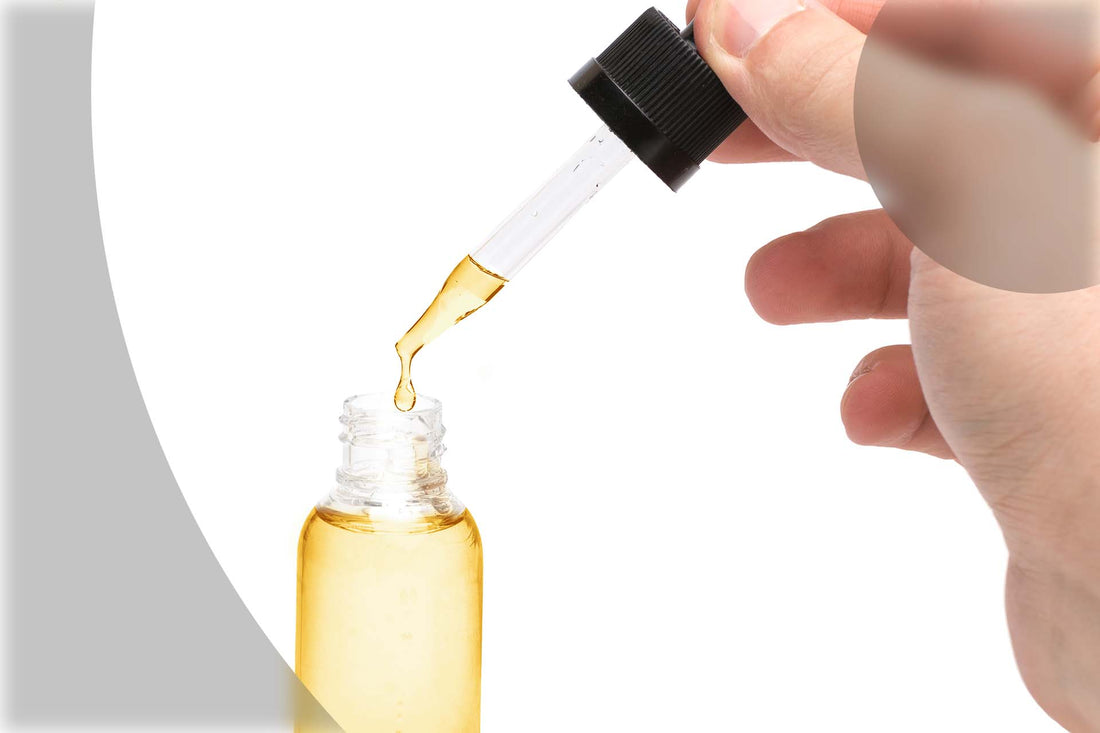
Vegetable glycerine (VG) is a vegetable-based ingredient widely used in E-Liquids for vaping. It's known for creating thicker vapour clouds while also providing a smoother vape experience. But what else do you need to know about vegetable glycerine? Read on to find out everything there is to know about VG in vape juice.
What is vegetable glycerine?
Vegetable glycerine (VG), is a clear, odourless liquid that has a sweet taste and is derived from vegetable oils. It's widely used in E-Liquids for vaping as it produces vapour clouds more easily than propylene glycol (PG). VG also has some additional beneficial properties, such as being an emulsifier, thickener, and humectant. As it is derived from vegetables, VG can be considered a more "natural" ingredient than PG.
When used in E-Liquids for vaping, VG has the added advantage of providing a smoother vape experience compared to other E-Liquid ingredients. This is why 50/50 and 30/70 VG ratios are considered smoother to vape.
Is vegetable glycerine safe?
VG is generally recognised as safe (GRAS) by the US Food and Drug Administration. As VG is vegetable-based, it has a much lower toxicity than PG or nicotine, so it's safe to use in E-Liquids for vaping. Of course though, like many things, there is a potential for an allergic reaction, which, although rare, can happen.
When used in vaping it can potentially result in some of the usual side effects of vaping such as headaches, nausea and stomach upset. Vaping is widely recognised as being
95% less harmful than smoking cigarettes however there is still potential harm involved. It is for this reason why vaping is suggested only for smokers looking to quit cigarettes - those who have never smoked should not use vapes.
Benefits of vegetable glycerine in E-Liquids
VG is an effective emulsifier which means that it helps to mix the other E-Liquid ingredients together, including any flavourings. It's also a thickener which increases the thickness of the vape juice and reduces leaking from tanks. If you notice your E-Liquid is leaking a lot check the ratio, you could benefit from choosing a 50/50 or 30/70! Finally, vegetable glycerine is a humectant ‚– this means it absorbs moisture into the air, making E-Liquids less prone to spoilage and extending the shelf life.
What else uses vegetable glycerine?
Vegetable glycerine has a range of uses beyond E-Liquids for vaping. It's used as an ingredient in food, cosmetics and pharmaceuticals, and it's even used in some laundry detergents!
It's also used as a sweetener in some food products and beverages, as it has a naturally sweet taste. For other foods, it acts as the emulsifier to help keep products moist and blend oil and water elements perfectly. The next time you buy some baked goods from the supermarket, check if yours has VG included, you'd be surprised.
In cosmetics, vegetable glycerine is commonly used in moisturisers, lotions and other skin care products due to its emollient properties. An emollient is an ingredient that helps to soothe, soften and moisturise the skin. If you use such products and notice a skin reaction you could be allergic to VG - make sure to check with a doctor if this does happen!
It's also used as a solvent in some pharmaceuticals and is an effective vegetable-based alternative to animal-based glycerine. Finally, vegetable glycerine can be used in laundry detergents to help break down tough stains and fabric softeners, due to its humectant properties. Basically, vegetable glycerine is a very versatile substance.
High vegetable glycerine ratio vaping experience
When you opt for a 30/70 PG/VG ratio E-Liquid, the vegetable glycerine content is much higher than the other ingredients. This means that your vape juice will produce thicker clouds of vapour compared to a 50/50 PG/VG ratio, or anything with a lower vegetable glycerine content. The higher VG content also results in a smoother vape experience ‚– this is because vegetable glycerine has a slightly thicker consistency than propylene glycol and so it doesn't irritate your throat as much.
Just make sure to keep an eye on your vegetable glycerine ratio, as if it's too low it can cause flooding of your coil and lead to a less enjoyable vaping experience.
High vegetable glycerine ratios are most commonly used for sub-ohm vaping because they produce a thicker cloud of vapour and can help to prevent a dry hit. If you're looking to increase your cloud production and have a smoother vape experience, then look for an E-Liquid that's 30/70 (PG/VG) or higher. It's important to remember though that VG is naturally a sweet compound so vape juice with more VG is likely to impact the flavour.
Just to sum up...
In conclusion, vegetable glycerine is a versatile ingredient used in E-Liquids for vaping, food products, cosmetics and pharmaceuticals. It's an effective emulsifier which helps to mix ingredients together and also acts as a thickener and humectant. When it comes to vaping specifically, vegetable glycerine can help create thicker clouds of vapour and a smoother vaping experience. Higher vegetable glycerine ratios are most commonly used for sub-ohm vaping as they can help prevent a dry hit, however it's important to remember that VG is naturally sweet so vape juice with more VG is likely to affect the flavour.
All in all, vegetable glycerine is an important ingredient in E-Liquids. What's your preferred vaping ratio? Let us know in the comments below!



